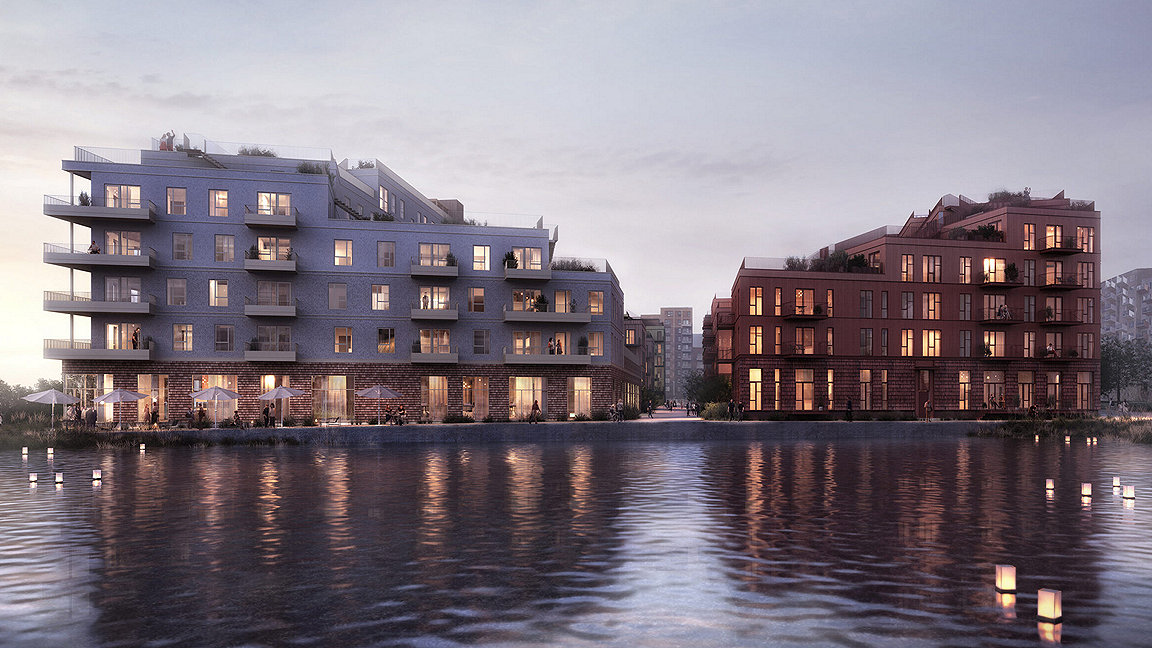
Visions of the UN17 Village
When it comes to real estate – indeed, pretty much any area of life – it is worth being sceptical about any initiative that claims to be ‘unique’, ‘unprecedented’ or ‘breaking new ground’.
Most of the time they aren’t and such descriptors act as mere hyperbole. The UN17 Village development in Ørestad, Copenhagen, might just be the exception that proves the rule.
After all, UN17 Village, which is being brought forward by investor and developer Nordic Real Estate Partners (NREP), is believed to be the first project in the world aiming to meet all 17 of the United Nations’ sustainable development goals (SDGs). But how did the development come about? And how does NREP intend to achieve all 17 goals?
UN17 Village’s roots go back to 2018 when the Copenhagen City and Port Development Corporation were trying to figure out how to go about procuring a partner for the site in Ørestad (the last undeveloped site for which it was responsible). The site has quick transport links into central Copenhagen and access to natural beauty, something that played into the corporation’s decision to try to make the last phase of development a genuine exemplar.
“They decided ‘okay, this project should not just be about money, so we'll fix the price’ and it’s about which team comes up with the best proposition,” says Martin Schultz Nielsen, head of investment at NREP.
“We teamed up with a set of strong advisors and they had the idea that real estate plays a role in the global agenda. It emits 40% of climate emissions and is where we sleep, where we live, where we work, where we play, where our kids grow up, so let's put [our proposals] into a global agenda context.”
An ambitious target
The leap to the ambition to meet the UN’s SDGs was therefore logical, but it was no less ambitious for being so. After all, several large fund managers and others have come up with plans to meet five or six SDGs in recent years, but not all 17. The ambition is all the more remarkable given that some of the goals (see boxout below) do not appear, at first glance at least, to have much to do with real estate development.
According to Nielsen, however, it is all about putting things in a local context. SDG number two – zero hunger – is a good example. “Fortunately, hunger is not a big problem in Denmark, but we do have a nutrition and health food diet agenda,” he says.
“So, we have a common dining area, but we also have a researcher and cook who helps do affordable, healthy food for the people who live there. There are greenhouses on some of the buildings where the people can grow their own vegetables and fruits. It is about putting [the SDG] into a realistic context and working out to address that.”
In total, the village comprises five residential buildings, the first two of which should be completed within the next few months. The third is scheduled for April 2024, the fourth for June and the fifth for October. The buildings will be aimed at different demographic groups to ensure a diverse community and, of course, to help meet some of the socially focused SDGs.
“We are intentionally trying to target a mixed set of people and to introduce a community with a lot of common areas,” says Nielsen, adding that one of the first buildings will be for people aged 45-plus and set along the co-housing model. “So, you're getting a little bit of a smaller apartment for yourself, but then access to a kitchen, a library and a TV room where you will spend most of your time and be together with the other tenants,” he says.
Another building will target the 20-35-year-old demographic and will feature “hip cafés and a lot of common areas”, while others will provide larger units aimed at families or feature a mix of sizes aimed at all age groups. “We can cater to singles, couples and to families,” says Nielsen. “We’re trying to build a genuine community.”
Scroll through some of the ways the Village will meet the 17 goals:
Defining a community
It’s clear that NREP and its project team has put a great deal of thought into how the community will be pieced together. But is there also a danger that it will be seen as dictating how a community should function, rather than allowing it to evolve naturally?
On some levels, defining things so tightly seems reminiscent of some of the developments brought about by British industrialists in the 19th century, who provided excellent accommodation by the standards of the day. But they also demanded that workers and their families committed, for instance, not to drink and to turn up for church on a Sunday.
Nielsen is clearly aware that this perception could be an issue. But, he says, the whole point is that both the ways in which the buildings have been designed and will operate has been done in conjunction with – almost at the behest of – future residents. “We've really tried to have inclusion with the tenants and how we programme especially,” he says.
“With the one we'll be opening in June, we’re having workshops with the tenants. So, how often do you think you would want to use the common dining room? Do you want to use the greenhouses? We have a community manager and that is not about being controlled but having someone to nurture the community and bring these people who don't know each other today together.”
All the buildings will meet exemplary environmental standards – as much thinking has gone into how the buildings operate as the way they have been designed. How UN17 Village can demonstrate that it is hitting the non-environmental targets will be harder, but it will be a fascinating case study to re-visit in a couple of years’ time.
“We are intentionally trying to target a mixed set of people and to introduce a community with a lot of common areas” Martin Schultz Nielsen, head of investment at NREP
The United Nations’ sustainable development goals
The 2030 Agenda for Sustainable Development, adopted by all United Nations (UN) member states in 2015, provides “a shared blueprint for peace and prosperity for people and the planet, now and into the future,” states the UN.
At its heart are the 17 sustainable development goals, which are an urgent call for action by all countries working together in a global partnership.
They urge that ending poverty and other deprivations must go hand-in-hand with strategies that improve health and education, reduce inequality, and spur economic growth. All while tackling climate change and working to preserve the world’s oceans and forests.
The 17 goals are:
1. No poverty
2. Zero hunger
3. Good health and wellbeing
4. Quality education
5. Gender equality
6. Clean water and sanitation
7. Affordable and clean energy
8. Decent work and economic growth
9. Industry, innovation and infrastructure
10. Reduced inequality
11. Sustainable cities and communities
12. Responsible consumption and production
13. Climate action
14. Life below water
15. Life on land
16. Peace, justice and strong institutions
17. Partnerships for the goals

